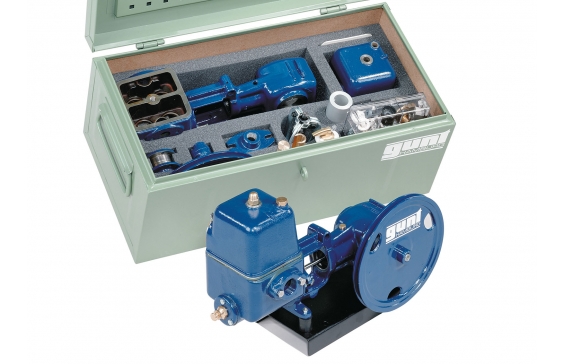MT 184 Assembly & maintenance exercise: piston pump

Piston pumps are positive displacement pumps and operate in an oscillatory manner, normally primed. At constant speed, their characteristic is an almost vertical straight line; at different pressures the volumetric flow remains approximately constant.
The pump presented here is a dual-action piston pump. This means that each piston stroke is both an intake and delivery stroke. Typical applications of the pump dealt with here are the pumping of drinking and service water for domestic use, in agriculture, shipping, industry and gardening centres.
The MT 184 kit forms part of the GUNT-Practice Line for assembly, maintenance and repair designed for training at technical colleges and in company training centres. A close link between theory and practice is key to the learning content. The kit is ideally suited to project-based learning with a particular emphasis on ‘hands-on’ work. Independent working by the students is assisted and encouraged. Performing in a small team offers a useful learning format.
MT 184 enables a typical piston pump to be assembled and maintained. Students become familiar with all the pump components and their modes of operation. The parts are clearly laid out in a tool box. Systematic assembly and disassembly of a pump is practiced. The instructional material details the individual steps involved in the exercise, and provides additional information on the areas of application, mode of operation and design of the pump.
- practical exercise based on the assembly and maintenance of a piston pump
- part of the GUNT-Practice Line for assembly, maintenance and repair
Piston pump
- max. flow rate: 1000L/h
- max. head: 60m
- max. power consumption: 370W
- drive via V-belt, motor speed: 1450min-1
- intake connection: 1”
- delivery connection: 1”
- learning concept for maintenance and repair exercises on a double-acting piston pump
- air vessel to compensate for pressure surges
- integrated safety valve returns a portion of the flow back to the intake side in event of overpressure
- piston rod seal based on the gland principle
- pump drive via V-belt pulley
- pump parts and tools housed in a tool box
- part of the GUNT-Practice Line for assembly, maintenance and repair
- design and function of a piston pump and its components
- assembly and disassembly for maintenance and repair purposes
- replacing components (e.g. seals or bearings)
- troubleshooting, fault assessment
- planning and assessment of maintenance and repair operations
- reading and understanding engineering drawings and operating instructions
